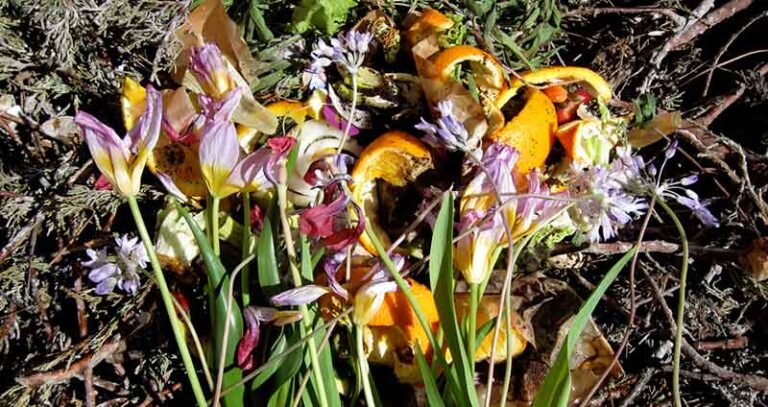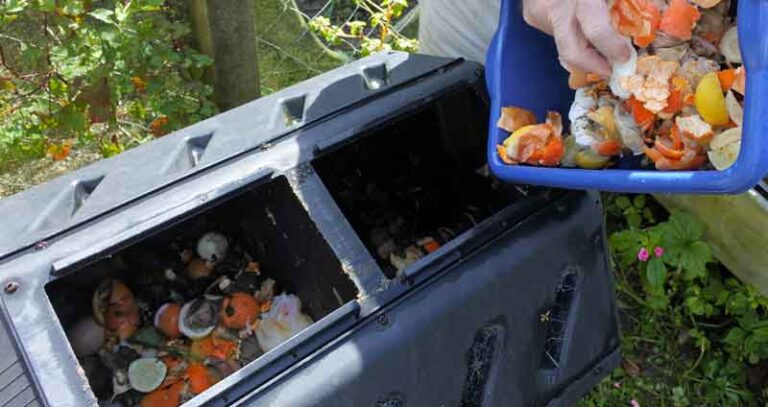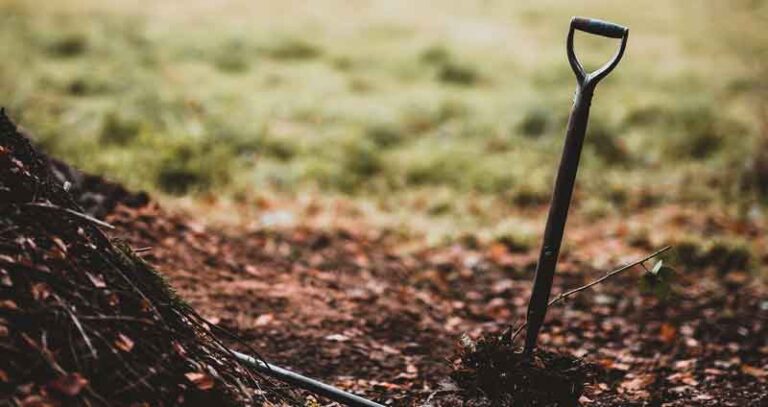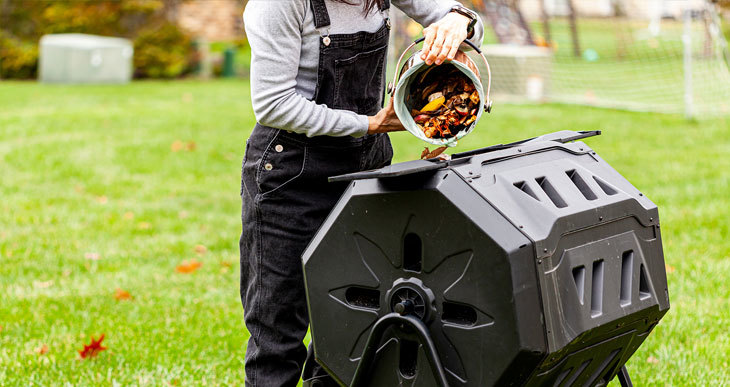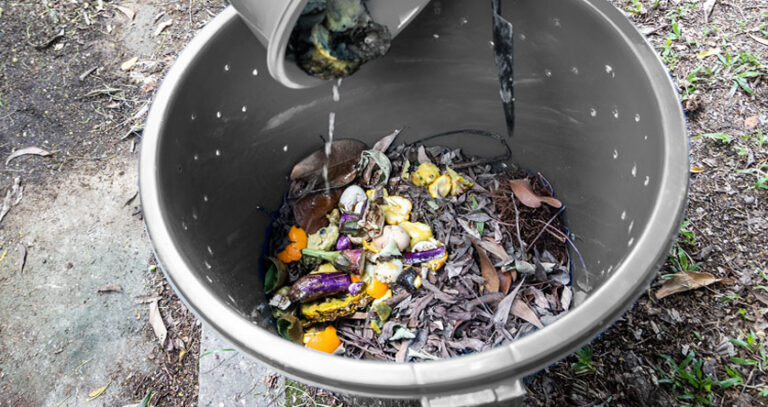Easiest Composting Method Of All Time!
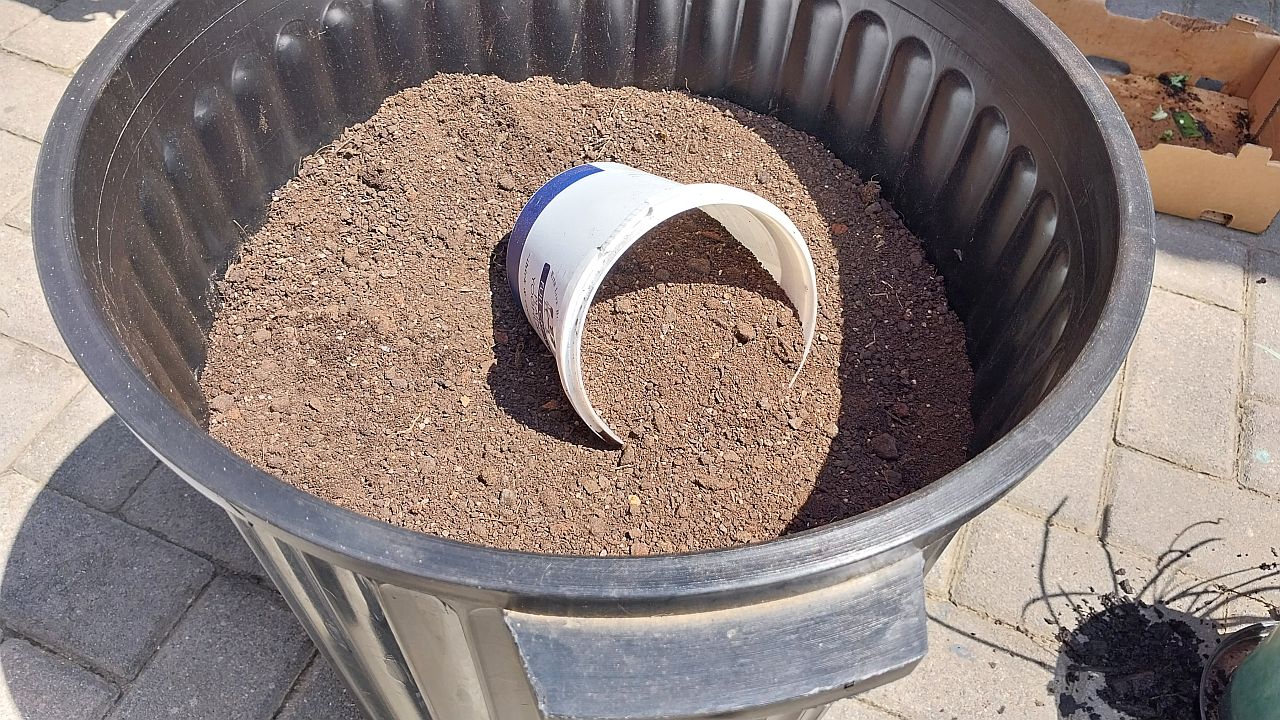
You may know that home composting is the best way to take care of your plants, but you struggle with time or simply forget to give your compost enough attention.
Most of us would rather tend to our plants than supervise the compost!
But did you know… There’s an easy composting method that can be helpful for gardeners that are pressed for time.
So if you’re looking for an effortless process to produce your own compost, I’ve got the solution for you!
The Easiest Compost Method Of All Time!
The easiest composting method is using a compost bin and letting nature take its course. Dump your organic waste in the compost bin and wait. Depending on the size and type of the material, it will take between three to six months to produce good, healthy compost. The bin keeps it contained.
There’s some excellent news for all you time-constrained gardeners or those who simply don’t like messing with compost!
Composting can be as basic or complicated as you want it to be. The main difference between the various methods is the time it takes to produce the finished compost you can use in your garden.
So for anyone looking for a “hands-off” method of making compost, the easiest way is to use a set-and-forget principle.
You can walk away from it and let nature happen and do all the work for you.
Using a bin in this way is often referred to as “continuous composting.” As you continuously feed fresh organic material to the top of the container, it slowly decomposes and becomes finished compost that you can extract from below. In effect, you get a continuous flow of compost!
Why Is Bin Composting The Easiest Method?
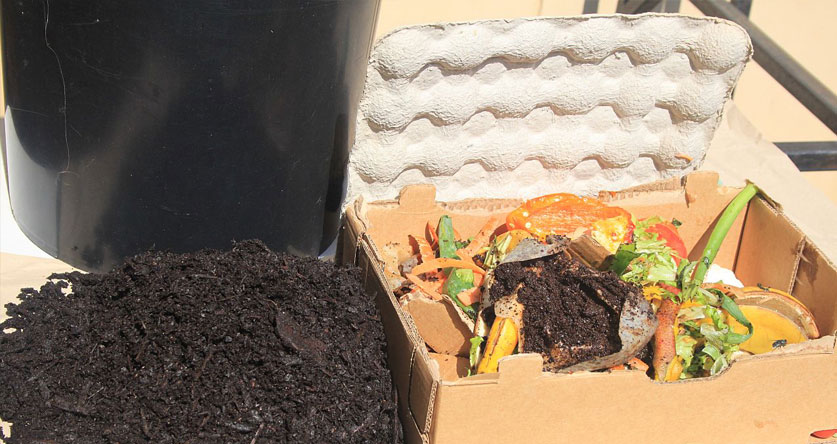
You may wonder why I recommend a simple bin as the easiest composting method rather than a standard cold composting pile.
Here’s the reasoning behind why compost bins are the best and most straightforward choice.
- Easy to implement. A compost bin can be purchased, or you can build your own for relatively low cost and time commitment.
- Easy to use. Your only involvement is to lift the lid and deposit the organic material. A little thought into varying the green and brown material ratio will help the process, but it is not essential.
- Natural composting. The process is entirely natural, using worms and other decomposition microbes that have access to the bin from the soil below.
- The bin keeps the compost contained. Retrieve the completed compost from the bottom of the container.
That last point (“keeping the compost contained”) is perhaps why bin composting is better than a compost pile. You would need to dig down or turn the pile over to access the completed compost below in a compost pile.
Digging through the layers of decomposing upper material is work. You may find it not worth the effort and time to get to the layers below and retrieve the compost.
Keep in mind that if you’re prepared to pay a bit more attention to how you layer the compost ingredients, you can get quicker results. Read my guide about layering compost here…
Most compost bin designs like this (Amazon) have an access door at the bottom of the bin, which you can open to extract the compost. This removes the work required to dig through the upper levels to extract the compost, making it a more straightforward system than a compost pile heaped in the corner of your garden.
Of course, piles have some advantages, but they also require a bit more work. For example, a compost pile can dry out quickly, so the moisture level needs monitoring. And this probably means turning regularly to move the dry outer layers into the middle, where they can decompose adequately.
Compost Bins Can Be Placed Where You Need Them
A compost pile is untidy, messy, and attracts pests to the garden, while a compost bin is neat, enclosed, and not an eyesore in the garden.
The result is that you can place a compost bin where you need it most. For example, you can position the container in your garden bed if you are an in-ground gardener. Any beneficial nutrients leaching out of the bottom of the bin will go directly into the soil where your plants are growing.
Suppose you use raised beds to grow your vegetables. In that case, you can position the compost bin near your raised beds, removing the need to transport compost in wheelbarrows to your raised beds.
What could be easier?
Some new products are specifically designed to be semi-submerged in your garden bed. This gives worms and other soil life direct access to your composting waste and helps speed up the process.
Compost bins used in this way will produce quality compost in about 3 months. Once the process has completed the first batch of compost, it will continue as long as you keep adding material on top and give you a constant supply of compost.
Compost bins take the “chore factor” out of the composting process.
Which is why I think they’re the most effortless method of all time!

